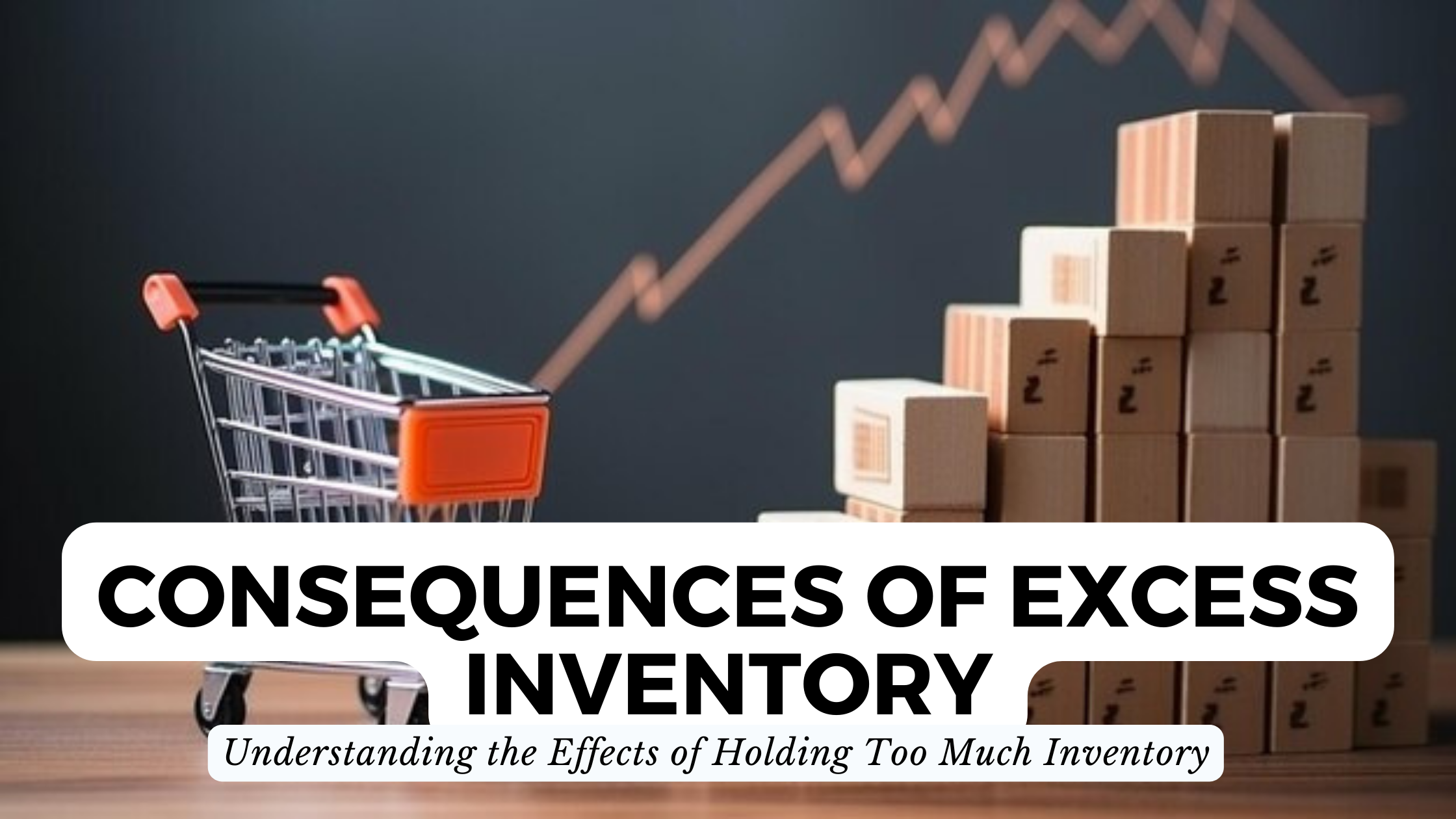Consequences of Excess Inventory: Understanding the Effects of Holding Too Much Inventory
- Data as a Service (DaaS) Software Marketing & Analytics


Consequences of Excess Inventory: Navigating the Pitfalls of Overstock
Inventory management is a complex dance for businesses operating in a competitive and dynamic marketplace. Striking the right balance between having enough stock to meet customer demand and avoiding the perils of excess inventory is crucial for sustained success. In this exploration, we delve into the multifaceted effects of holding too much inventory and introduce powerful Software as a Service (SaaS) solutions to optimize inventory management, offering businesses a strategic advantage in this delicate balancing act.
The Domino Effect of Excess Inventory
1. Storage Costs Soar:
Warehousing excess inventory is not just a matter of physical space but also a significant financial burden. The costs associated with storing surplus goods can quickly escalate, impacting a company’s bottom line. As products linger on shelves, the expenses tied to storage, security, and climate control rise, putting additional strain on resources.
2. Cash Flow Crunch:
Capital tied up in surplus stock is capital that could be invested elsewhere in the business. The financial health of a company is directly linked to its ability to generate and maintain cash flow. Excess inventory can lead to a cash flow crunch, restricting a company’s flexibility in responding to opportunities or challenges.
3. Risk of Obsolescence:
The longer products sit in warehouses, the greater the risk of obsolescence. Technological advancements, changes in consumer preferences, or the introduction of newer models can render existing inventory outdated. This risk is particularly pronounced in industries with rapidly evolving products.
4. Discounting Pressure:
To clear excess stock quickly, businesses often resort to discounting. While this may provide a short-term solution, it can have long-term consequences. Frequent discounts erode profit margins and condition customers to expect lower prices, potentially impacting a brand’s perceived value.
5. Impact on Sustainability:
Overstock not only affects a company’s financial health but also its environmental footprint. Unsold products, especially those prone to spoilage or expiration, may end up in landfills, contributing to environmental waste and undermining sustainability goals.
SaaS Tools for Effective Inventory Management
As businesses grapple with the consequences of excess inventory, optimizing inventory management emerges as a strategic imperative. SaaS tools offer sophisticated solutions that go beyond basic stock tracking, providing real-time insights and automation capabilities to prevent overstock scenarios.
1. TradeGecko:
Inventory and Order Management TradeGecko stands as a comprehensive solution for inventory and order management. With features such as real-time insights and demand forecasting, businesses can make informed decisions to prevent overstock situations.
2. Zoho Inventory:
Inventory Control Software Zoho Inventory offers businesses the ability to exercise precise control over their inventory. With features like order fulfillment, invoicing, and inventory tracking, Zoho helps in maintaining optimal stock levels.
3. Cin7:
Integrated Inventory Management Cin7 provides a holistic solution with integrated inventory management, point of sale, and order management. Real-time visibility across the supply chain ensures businesses can proactively manage their inventory.
4. Fishbowl:
Inventory Management for QuickBooks Fishbowl integrates seamlessly with QuickBooks, providing advanced inventory management features. Businesses can optimize stock levels, automate replenishment, and prevent overstock scenarios.
5. SkuVault:
Warehouse Management System SkuVault is a warehouse management system designed to prevent overstock and improve order accuracy. By syncing inventory levels across multiple channels, businesses can enhance efficiency.
Conclusion
Effectively managing inventory is not just about preventing stockouts but also avoiding the consequences of excess inventory. It requires a strategic approach that leverages advanced tools and technologies. By understanding and mitigating the consequences of overstock, businesses can maintain a healthy balance between supply and demand.
Explore Exclusive Deals with Subscribed.FYI
As businesses navigate the complexities of inventory management, Subscribed.FYI offers exclusive member-only deals on SaaS tools like TradeGecko, Zoho Inventory, and Cin7. Sign up for free today to unlock substantial savings and enhance your inventory management strategy.
Unlock secret deals and optimize your inventory management with Subscribed.FYI Deals now!





